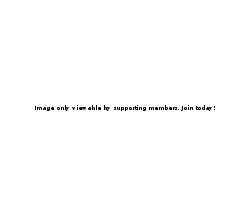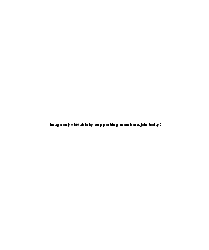Rotation.org Writing Team
Exodus: Through Water and Wilderness
A Creative Writing Workshop
Summary of Activities
 Students will gather around a creative writing table that features a map of the story made out of "no mess paint bags" which they and the teacher will "write on" with their fingers to illustrate and write responses to the story as it unfolds. Then they will move to a Water from the Rock "dissolving" demonstration that reflects on God's forgiveness of his children's sins and gracious response.
Students will gather around a creative writing table that features a map of the story made out of "no mess paint bags" which they and the teacher will "write on" with their fingers to illustrate and write responses to the story as it unfolds. Then they will move to a Water from the Rock "dissolving" demonstration that reflects on God's forgiveness of his children's sins and gracious response.
A teaching "script" for the writing table's Exodus Rescue Route activity is provided, and includes the scripture verses.
Scripture for the Lesson
Provided in the attached handout, the verses excerpt for children the following stories.
- Red Sea: Exodus 14
- Marah Well: Exodus 15
- Manna: Exodus 16
- Water from Rock: Exodus 17
Lesson Objectives
See the Bible Background at rotation.org for this set's complete list of objectives.
Preparation and Materials
- Read the Bible Background and scripture.
Supplies for the Writing Table Activity:
- Print the teaching script for the Writing Table activity attached to this lesson.
- Print the Map of Egypt and the Sinai attached to this lesson.
- A box of large double Ziploc "freezer" bags (minimum of 9, see drawing below).
- A large sheet of white paper taped down to the table (goes under all the bags).
- Green,blue, and brown "washable paints."
- Clear packing tape to anchor bags to the table.
Supplies for the Water from the Rock Station:
- A pack of dissolving paper (found inexpensively online among magician's supplies, or in fabric stores under the name "water soluble stabilizer." ).
- Colored markers.
- A large clear plastic tub (approx 6" high by 24 inches long).
- Several stackable rocks to put in the end of the tub.
- A large bucket of water.
How the Paint Bag works:A little less than a 1/4 cup of paint is sealed in a 1 gallon "ziploc" plastic bag and laid flat on a table. The paint is then evenly spread inside the bag, such that, when the student "writes" on the plastic bag with their finger, their finger forces the paint to the side revealing the white paper underneath the bag. No mess, and its re-usable. Note: Do not put too much paint in the bag. More is not good.
Making the Paint Bag Story Map
Your creative writing "table" will feature the three geographic zones the Israelites traveled through in the story: Egypt (green), Red Sea (blue), and Sinai Desert (brown). Importantly, each zone not only represents the actual Egypt-Sinai geography in the story, but also the metaphorical meanings/life applications Jews and Christians have always seen in the story and want to pass on to young people. Namely, following God means leaving our comfort zones and things that hold us captive (Egypt), being rescued through water (Red Sea/Baptism/Following in faith), and the relying on God to provide for us in the desert (life's challenges), and revive us along life's spiritual journey.
Set up the Paint Bag Story Map ahead of time.
Number of 1 Gallon "Paint" Bags
Nine Bags will create a good sized "table map" —giving you and 2-8 students room to write on. You will need two green and one brown bag for Egypt. One blue bag for the Reed Sea and one for the Red Sea. Five brown "desert" bags as seen below. You will need this many bags for two reasons. (1) You need to represent the three regions. (2) Each student will need to write on a bag during the lesson, and typically they'll need more than half a bag's space to make their words legible on the paint bag. 
* Place white paper underneath the bags so that the letters will stand out as white when the student's finger presses through the paint.
* Use packing tape to anchor the edges of the bags to the table so that they don't slide around.
Paint Bag Tips:
 Use craft paints that are bright and thick. Poster paint pictured.
Use craft paints that are bright and thick. Poster paint pictured.- Use a little less than a 1/4 cup of paint and test how well it draws. You do NOT want too much paint in the bag.
- The "stickier" the paint, the better so that the paint doesn't flow back into the letters when drawn.
- Squeeze out all the air before sealing the bag.
- Use bags with double zip seal, (not the sliding lock kind).
- Use freezer bags because they are thicker and stronger.
- Most bags have a printed log on one side. Lay that side down on the table.
- Patting the bag to redistribute the paint is a good technique to "erase" writing and redistribute the paint.
- Using construction paper, cut out a few "props" that you can tape to the map during your talk (pyramids, well, Mt Sinai. etc.)
Advanced Option: "One Big Paint Bag Table"
 Ahead of time, you can create one large "bag" by sandwiching globs of paint between two layers of thick plastic that you then hot glue together after you have expelled excess air. This would turn your table into one large writable surface. Outline the land and water forms with a line of glue so that the paint colors between the layers of plastic do not bleed across the sections. Be sure to place white paper underneath.
Ahead of time, you can create one large "bag" by sandwiching globs of paint between two layers of thick plastic that you then hot glue together after you have expelled excess air. This would turn your table into one large writable surface. Outline the land and water forms with a line of glue so that the paint colors between the layers of plastic do not bleed across the sections. Be sure to place white paper underneath.
This advanced table makes the table re-usable by other groups, and gives larger groups more writing space on the paint.
Use clear plastic tarps from the paint supply section. 4 mil minimum.
Click the "glue line" image here for a printable version of the "glue line" map.
Lesson Plan
Open
Welcome your students. Gather around the Paint Table and find out how much they already know about the four stories.
Tell them how the lesson will unfold: "As we read through today's story, you will help me draw the story on our paint table, and write some words to express your thoughts. After that, we'll be using that bucket of water over there for a special final activity."
Writing/Paint Table
 Attached to this lesson at rotation.org is a "script" you can use to lead your students through the paint table activity. It is a WORD docx that you can modify to suit your own needs and add notes to.
Attached to this lesson at rotation.org is a "script" you can use to lead your students through the paint table activity. It is a WORD docx that you can modify to suit your own needs and add notes to.
Teaching Tips: Think of yourself as a storyteller who prompts students to respond as the story unfolds. They will help you imagine the paint bags are a map of the story, and respond in writing to your prompts. Naturally, some will want to doodle, but keep a tight rein on that as you don't want to waste time, mess up someone else's work, or play too rough with the bags. Put the paint table off-limits after the lesson.
[Be sure to leave 10 minutes for the final "Water from the Rock" Reflection.]
Reflection: Washed by Water from the Rock
By now, you'd think God was fed up with his complaining children. But God rather than punish them, God once again provides. Given the context, the water gushing from the rock is an emphatic act of forgiveness and grace. —And that calls for an "emphatic" writing activity and dramatic ending.
In this activity, student will write on "dissolving paper." When the paper is placed in your tub and water is "poured" from the rock, the papers will begin to dissolve. Dramatically, the writing on the paper will appear to float off, and then with a little swirl, they too will disappear.
The Point: God does not hold our doubts and fears against us. God saves!
1. Assemble your "Rock of Horeb" in front of the students. Stack several large rocks into one end of a large clear plastic tub (approximately 4" to 6" deep by 12" by 18"). Place a full bucket of water next to the tub. Label the bucket, "God's Forgiveness." Have your markers and "dissolving paper" cut in strips ready to go. (See note below about this type of paper.)
2. Give each student a slip of the dissolving paper, and a marker. (Cut your dissolving paper into slips about 1" x 4" ...so that you can repeat this writing demonstration after they've done it once. (Don't tell them it's special paper.)
3. Writing on the special paper... have your students complete and write out one or more of these statements:
The Israelites acted like....
The people's faith was....
They didn't _____ God.
My faith is weak because...
It's hard to follow God because...
You may also provide a set of "excuses" they can choose from and "customize."
- Following God is too hard.
- God just seems like a pillar of smoke to me.
- I don't like asking God for help.
- I'm afraid of showing my faith.
- I like doing my own thing, rather than following God.
- I'm lazy about my faith.
Help non-writers to complete their strips.
4. Now have your students place their "sin" papers in the tub of water. The paper will start dissolving. Now pour water down the rock so that it gushes into the tub and creates a bit of a dramatic swirl (to help dissolve the paper). (Using warm water and stirring the paper if needed will hasten the dissolution process.)
5. Share this with your students as the paper dissolves....
There are many ways God saves/rescues:
1. Time and time again the Bible reminds us that God saves us from being alone in times of trouble. God wants to be our guide. Lost? God can find you. Confused? God will give light. Sinning? Finding life's journey is tough, dry and leaving you parched? God provides, ...if you are willing to open your hearts and eyes to his presence and blessings.
2. God saves us from sinful selves. When the Israelites complained and acted stupid, God still blessed them. God doesn't hold our sins against us. Every time the Israelites doubted, and acted unfaithful, God was merciful, and God saved.
And finally...
3. God saves us from death, by promising us eternal life with him. Even DEATH cannot stop God's mercy. God's mercy and steadfastness, even to sinners like us, is never-ending. This belief is famously found in Psalm 100:
For the Lord is good;
his steadfast love endures forever,
and his faithfulness to all generations.
Adjustments
If you have too many students for one writing station, then consider the "advanced" table option described above and make a bigger paint table of your own. Or, you can set up a second table and lead both at the same time (with help).
Younger students can illustrate, rather than write words. See the script for examples.
About Dissolving Paper
Dissolving paper can be purchased in inexpensive packs or pads and cut into strips. It is made out of Sodium Carboxyl Methyl Cellulose which comes apart in water. Other than Amazon, science and magic supply stories stock it. Check Sciencebobstore.com, for example. It is also found in fabric stores under the description "water soluble stabilizer" (H20 Gone brand, for example).
A Note about Maps
Maps are visual organizers. They provide us with a handy visual focus for information and can show a story's sequence. This is why we can use maps with young children, as well as, older students. By teaching a little of the geography of the Holy Land, we are also creating a lifelong connection to the Exodus story with a land form they will become very familiar with as they get older. The colors and terrain of a map can also represent deeper ideas which you will share with them.
Red Sea, "Reed Sea" and Map Notes
Print the map attached to this lesson.
The actual path and locations of the Exodus story are educated guesses. There are several different competing routes and theories about where they crossed, and where they stopped, and there are even documentaries about these theories, but we simply can't be exactly sure where things happened. The Old Testament does go to great lengths to give names and features to locations, –meaning that at one time the locations were known to the people, but as they were passed down through the generation, and eventually written down, descriptions changed. What has not changed is the firm belief that God saves! ...in spite of our complaining and doubting.
Regarding "Red Sea" vs "Reed Sea." There are many theories about the location of the crossing of the Red Sea, some of them, even good! One traditional theory looks at the Hebrew word for "Red Sea" and translates it literally at "Sea of Reeds." And there actually was a region in the Nile Delta known as the "Reed Sea." It is just east of the Land of Goshen where many Hebrews lived (given to Joseph by Pharaoh, remember?) The word "red" is the same as "reed" in Hebrew, and thus, the location of the Exodus crossing may be referencing the Sea of Reeds rather than what modern people have labeled the Red Sea farther down the Sinai coast. ("Where" is one of the least important questions.)
Some theories purport to explain "how" the water divided, but like all miracles, they aren't meant to have natural explanations. However, the real miracle is not the parting of the Red Sea (or Reed), but the fact that God didn't toss all those complaining children of Israel back into the Sea after a few weeks in the desert!
Importantly for us today: the map of the Exodus is a metaphor. We are the ones being rescued. and our rescue takes us through the wilderness. We are the ones doubting and fearing. In need of food and water for the journey. And God is with us still.
We move from our Egyptian comfort zones to follow God into the hard places. We'd rather be comfortable slaves than risking it all following a God who sometimes seems just like a pillar of smoke on the horizon. God continues to bless us even as we continue to complain. We have short memories and fickled faith.
Are we there yet? No, and yes. Because as long as we are being led by God, we are exactly where we need to be. In that respect, the Promised Land is the same as Jesus' Kingdom of God. It's not a place, but a state of being.
Written by the Rotation.org Writing Team
Based on an lesson idea from Jaymie Derden
with contributions from Neil MacQueen.
Copyright 2016, Rotation.org Inc.








